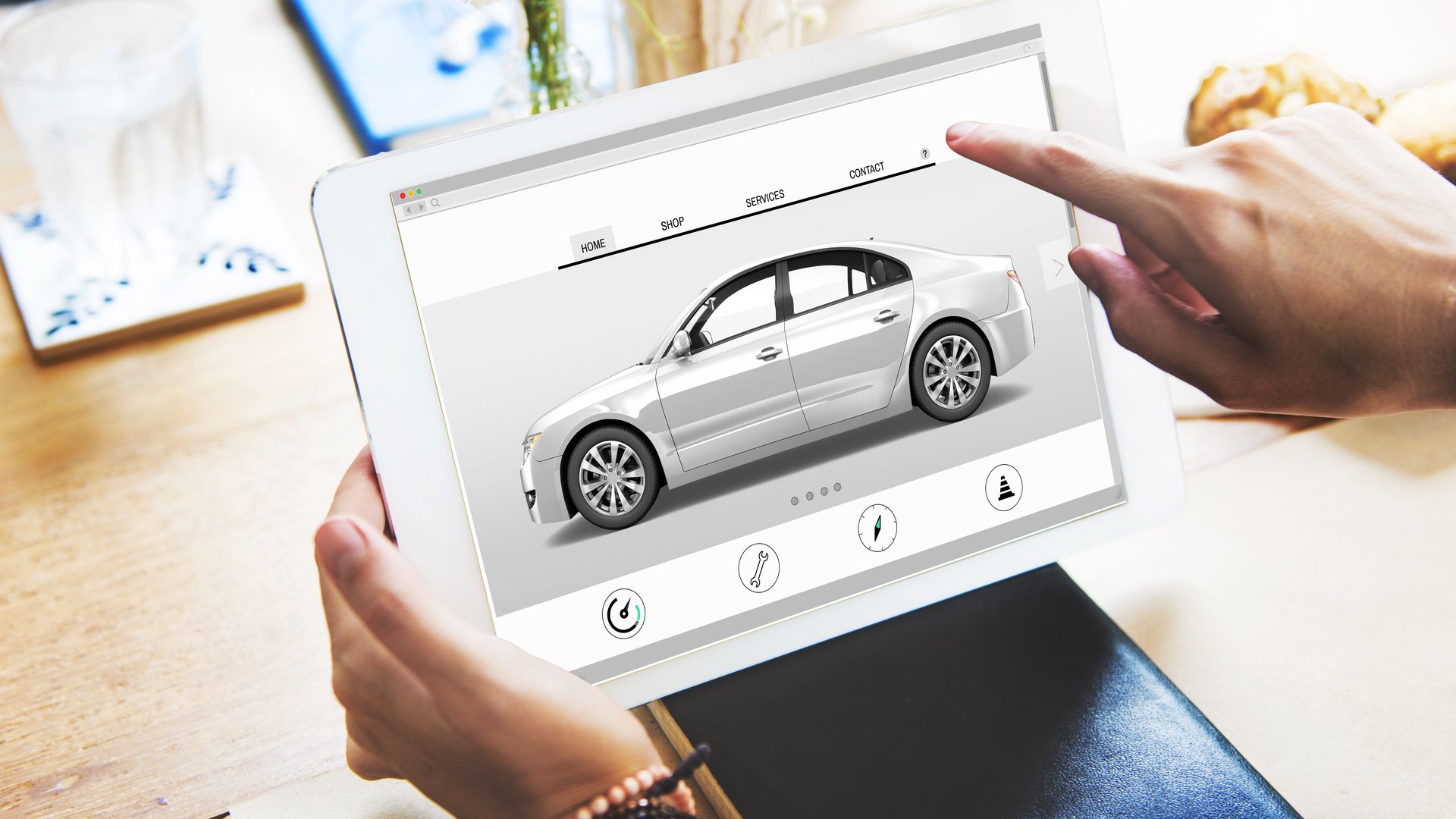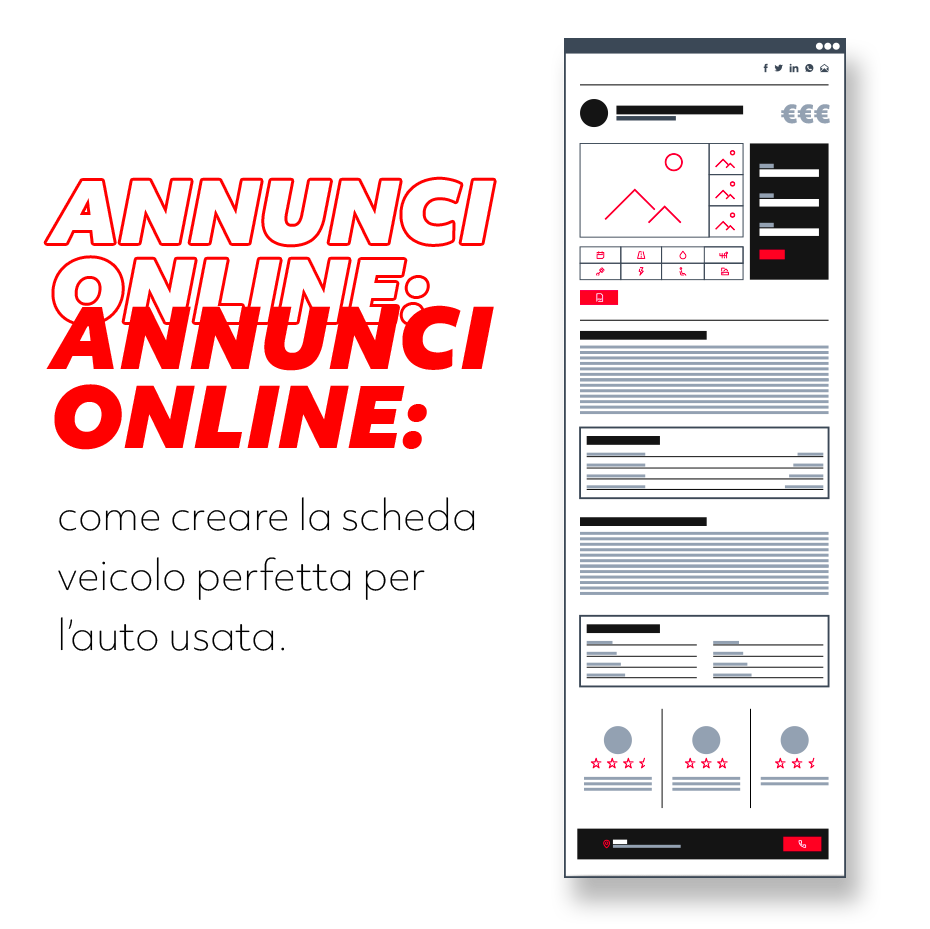It is clear that the Coronavirus has changed the lifestyles of the world’s population. Not only have consumption trends adapted, the way people move and entertain themselves adjusted, but also online shopping habits have evolved. In April, according to recent Digital 2020 research, the number of people connected to the Internet increased by more than 300 million compared to the previous 12 months. There is an increase in the number of users browsing the web, but there is also an increase in searches made via mobile devices and tablets, including car browsing.
Nowadays, those who decide to buy a car first go on the web to gather information, look for reviews, simulate financing, compare prices and models. As Internet use increases, MotorK forecasts that the average number of showrooms visits will continue to fall: already down from an average 8.1 before the Internet era to 2.6 in the pre-lockdown period, visits to dealerships before making a purchase will fall below an average of less than 2.
If the car selection and purchase process also moves online – and particularly on smartphones – a question arises: what can dealerships do?
Google’s experts have recently identified some elements of UX that contribute to improving the browsing experience of those who want to buy a car and that we at MotorK, believe can be useful, and easily accessible for operators in the sector.

How to provide a better browsing experience right from the homepage
Mobile devices and tablets have now surpassed the online traffic generated by PCs and, if those who use their smartphone to browse the web are constantly surrounded by distractions, it is increasingly necessary to ensure a simple, and immediate browsing experience. In detail, it is on the homepage – the first online contact tool between the customer and the dealer – that the user must find the most important information in a clear, direct, and easily understandable way, in such a way that they remain imprinted.
In order to make the user experience more pleasant and intuitive, one thing that should not be underestimated is, for instance, the call-to-action that should be positioned ‘above the fold’. Placing the CTA at the top of the page will make it more visible, will increase its Click Through Rate (CTR), and will not force the user to use the browser’s scroll bar.
It is also important to make clearly visible on the homepage both the value proposition, i.e. the set of benefits that the dealer promises to provide to customers and from which they can derive satisfaction, and the offers-dedicated section. Users must be able to easily find information on customer support and after-sales activities to ask for direct assistance or useful information.
Communicate price effectively
Another key element for a website’s success is the clear and understandable display of prices. Users must be able to select, configure, and choose the ideal vehicle in a simple and intuitive way. To provide a comprehensive browsing experience, visitors or potential customers should be able to search by parameters such as price, body type and power supply, configure all available options and compare different models. Additionally, let’s not forget that at this stage we should not underestimate the importance of having high quality, high impact images, that are more inviting to click than low-resolution, shaded images. Always remember to find the perfect balance between image quality and loading speed. Our tests reveal, in fact, that 93% of consumers who are faced with the purchase of a car believe that these are fundamental elements in determining the choice of the ideal car.
In this case, the most effective metrics to measure User Experience are the following: Conversion Rate, Abandonment Rate, Bounce Rate, Engagement Rate and Shares.
Lead generation from mobile: the importance of forms
Forms are a valuable resource to collect information and turn leads into potential clients. But for visitors who surf the web through mobile devices, filling in forms can be tiring or not very intuitive, and sometimes leads to a high abandonment rate.
In order to create effective contact forms and encourage submissions, we must therefore aim to create a simple contact form, with fewer fields, and perhaps encourage the input of data through suggestions. Reducing the amount of information requested as much as possible is not easy, because it is necessary to carefully evaluate the most relevant information: addresses and multiple choices can be collected at a later date, for example.
If the aim is to maximise Drive to Store, a basic suggestion is to make it easier to find the nearest showroom and provide forms to book test drives.
Mobile site speed to increase traffic and conversions
Last but not least, it is the page load speed that is crucial for user experience – a Google search reveals that if a site takes more than 3 seconds to load from mobile, 53% of users leave the page – and to better position the site on search engines. As a result, the data clearly shows that action needs to be taken to improve page load speed. How can this be done? We need to focus on three aspects:
- – FCP (First Contentful Paint), the metric that measures the time it takes for the browser to display for the first time the first useful content on the page, be it text or an image.
- – Speed Index: the lower it is, the better the web page is performing. The Speed Index measures the average time it takes to load the visible parts of a site into the browser window.
- – Time to Interactive: the time it takes for a page to become truly interactive, i.e. the wait perceived by the user between the visibility of the contents and the possibility of interacting.
The number of users connecting to the internet from mobile devices is constantly growing. This is why official dealers and independent multi-brand dealers are now very aware that a dealer’s website – a real virtual showroom – must be simple, intuitive, and at the same time attractive. Now, more than ever, working on these 4 areas (homepage, price, form, and site speed) to simplify page navigation and make content designed for users more enjoyable allows dealers to maximise traffic acquisition and lead generation performance.
In recent years we have witnessed a growing trend in mobile Internet use: it is essential in this day and age to put the mobile user experience first, since making navigation smoother and easier can help create a better experience for those who plan to buy a car.






